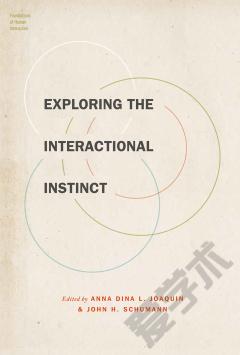Constructing Survey Data —— An Interactional Approach
----- 建构测量数据
Introduction: Rescuing the survey PART ONE: THE CONTEXT Surveying the Survey: Back to the Past The Making of the 'Survey Society': The 19th Century The Common Roots of the Survey and In-depth Interview The Pioneers: 1880 - 1935 Technical Improvements and the Abandonment of Mixed Methods The Idea of Standardizing the Survey Interview The Split between Quantitative and Qualitative Methods The Explosion and Institutionalization of Surveys Technical Modifications toward a Standardized Interview The Decline of the Concern for Data Collection The Globalization of the Survey Culture Model Concluding Remarks Back to the 'Golden Age': Towards a Multilevel Integrated Survey Approach What is Survey Research? From the Standard to the Multlievel and Integrated Survey Approach Concluding Remarks PART TWO: FROM QUESTIONS TO ANSWERS The Answering Process What Lies Behind the Datum? The Co-construction of Survey Data The 'Cognitive Turn' and the CASM Movement Inference Procedures Situation Awareness The Limits of the 'Cognitive Turn' and Social Information Processing (SIP) From Cognition to Interaction: The Pragmatic Turn The Logic of Conversation Concluding Remarks Asking and Questioning Attributing Meanings to Questions Evaluation: The Heuristics of Judgement An Alternative Typology: Cognitive Tasks and Response Alternatives Concluding Remarks Answers: Cognitive Processes Open-ended or Closed-ended? Facing the Dilemma Scalar Answers The Influence of the Response Alternatives The Pragmatics of Response Alternatives Response Alternatives and Linguistic Communities Researchers versus Interviewees? Towards a Reconciliation of Separate Worlds Concluding Remarks Communicative Processes Psychological States of Interaction Social Conventions Answers and Interviewees' Demographic Characteristics The Setting Concluding Remarks The Living Questionnaire: The Survey at Work The Initial Contact with Interviewees The Nonresponse Phenomenon The Sociology and Psychology of Nonresponse The Questionnaire in Action Incongruences in the Answers Concluding Remarks PART THREE: CONSTRUCTING ANSWER COMPARABILITY From Standardization of Stimuli to Standardization of Meanings: The Interactional Survey Approach The Behaviourism-based SSA: The Standardization of Stimuli The Interactional Survey Approach: Standardizing Meanings Bridging the Gap between Questionnaire (Researcher) and Interviewee: Empowering the Interviewer Standardizing the Meaning of Response Alternatives Too Concluding Remarks Training for the Interactional Survey Approach Motivating the Interviewee by Following the Norms of Conversation The Interviewer's Hermeneutic Role The Specific Hermeneutic Competence of Interviewers Evaluation of Interviewer Performance Concluding Remarks PART FOUR: DESIGNING DATA QUALITY THROUGH MIXED STRATEGIES Re-conceptualizing Data Quality What is Data Quality? Dimensions of Data Quality From Data Quality to Survey Quality Concluding Remarks Mixed Survey Strategies: Quality in the Quantity What is Mixed Methods Research? Mixed Strategies: The Proportion of Quality and Quantity in a Research Design The Integrative Role of Qualitative Procedures in the Survey: A Typology The Pilot Study: Orientation of the Data Construction Process Concluding Remarks Pretesting Strategies: Assessing Data Quality in Advance Aims of Pretesting Pretesting Strategies based on Manifest Evidence Qualitative Strategies: Inside the Black Box to Discover the Hidden Biases Concluding Remarks Deviant Case Analysis: Improving Data Quality The Limitations of Monitoring Techniques within the Data Matrix Deviant Case Analysis (DCA): The Exception that Refines the Rule The Functions of Deviant Case Analysis Exploring Deviant Cases: Some Techniques Concluding Remarks PART FIVE: ENVISIONING THE FUTURE Glocalizing the Survey Towards Multicultural Methodology The Global Survey and its Discontents: The Limits of Current Survey Methodology An Individualist Social Philosophy Western Tacit Knowledge Embedded in the Survey Model Lessons Learned from Cross-Cultural Surveys De-colonizing the Survey The Local Structural Context Combining Global and Local Brand New: Re-Styling the Survey Concluding Remarks
{{comment.content}}








 京公网安备 11010802027623号
京公网安备 11010802027623号